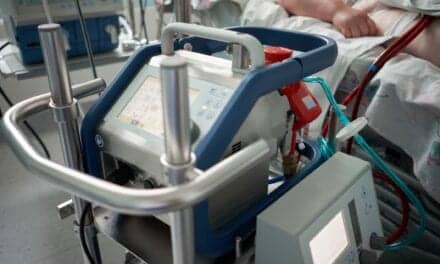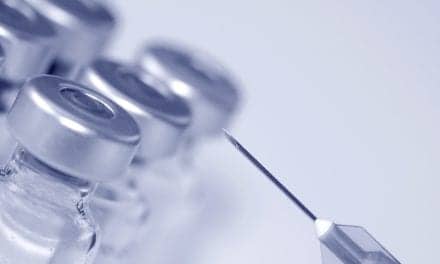 |
Scientific evidence has shown for some time that poor sleep is linked to numerous comorbid conditions. Some noteworthy correlations have been brought to light by scientists that establish links between sleep and diabetes, heart disease in women, and depression.
Diabetes and Sleep
Sleep researchers have found that disturbed sleep may increase the risk of developing diabetes. Too little deep sleep can raise blood sugar in individuals with type 2 diabetes.
Deep sleep, sometimes also called delta or slow-wave sleep, is characterized by high arousal thresholds and slow-wave activity (a stable, trait-dependent marker of the intensity of non–rapid-eye-movement sleep).1 Delta waves are predominant in this stage and are defined as slow (1 to 4 Hz), high-amplitude brain waves recorded through electroencephalography (EEG).2 Although its significance for physical well-being has not been fully demonstrated, deep sleep is thought to be the most restorative sleep stage.
In a 2008 University of Chicago study,3 nine healthy, lean subjects between the ages of 20 and 31 were observed for 2 successive nights to gauge normal sleep patterns and to examine the impact of sleep quality on blood-glucose control. On 3 additional nights in the sleep laboratory, just after they transitioned into deep sleep stages, subjects were exposed to controlled noises coming from bedside speakers, which caused slight EEG arousals.4 The sounds were not loud enough to cause full awakening. Deep sleep was decreased by 90% due to this method, and the amount of overall sleep obtained was unchanged.
Subjects were injected with glucose and their daytime blood-sugar levels and insulin responses were tested. Eight subjects of the nine had become less sensitive to insulin. The authors found that when slow-wave sleep was suppressed for only 3 nights, young healthy subjects became approximately 25% less sensitive to insulin. As insulin sensitivity decreased, subjects needed more insulin to dispose of the same amount of glucose. For the eight of the nine subjects, however, insulin secretion did not go up to compensate for reduced effects. The result was a 23% increase in blood-glucose levels, comparable to that seen in older adults with impaired glucose tolerance.
Those with low baseline levels of slow-wave sleep had the lowest glucose levels after having their sleep patterns disrupted and had the greatest decreases in insulin sensitivity.
“These findings demonstrate a clear role for slow-wave sleep in maintaining normal glucose control,” the study’s lead author, Esra Tasali, MD, assistant professor of medicine, explains. “A profound decrease in slow-wave sleep had an immediate and significant adverse effect on insulin sensitivity and glucose tolerance.”
Eve Van Cauter, PhD, professor of medicine and senior author of the study, says, “Since reduced amounts of deep sleep are typical of aging and of common obesity-related sleep disorders, such as obstructive sleep apnea (OSA), these results suggest that strategies to improve sleep quality, as well as quantity, may help to prevent or delay the onset of type 2 diabetes in populations at risk.”
The alarming rise in the prevalence of type 2 diabetes is generally attributed to the epidemic of obesity combined with the aging of the population. “Previous studies from our lab have demonstrated many connections between chronic partial sleep deprivation, changes in appetite, metabolic abnormalities, obesity, and diabetes risk,” Van Cauter says. “These results solidify those links and add a new wrinkle, the role of poor sleep quality, which is also associated with aging.”
Women, Heart Disease, and Sleep
In the past, sleep research has focused primarily on men. That trend has changed in recent years, and some associations are significantly stronger in women than in men. A recent study5 by a team of researchers at Duke University Medical Center found that poor sleep causes more impairment to cardiovascular health in women than in men. The study was supported by a grant from the US National Institutes of Health.
The study concluded that ineffective sleep is associated with higher levels of biomarkers associated with elevated risk of heart disease,6 as well as greater psychological distress. Poor sleep is also linked to type 2 diabetes in women, the study says. For men, there was no link between how well they slept and their mental or physical health. Women who slept poorly also reported more symptoms of depression, hostility, and anger.
Edward Suarez, PhD, an associate professor in the Department of Psychiatry and Behavioral Sciences at Duke and the lead author of the study, says, “This is the first empirical evidence that supports what we have observed about the role of gender and its effects upon sleep and health. The study suggests that poor sleep—measured by the total amount of sleep, the degree of awakening during the night, and, most important, how long it takes to get to sleep—may have more serious health consequences for women than for men.”
Most existing studies that probe sleep and heart disease include people with serious sleep disorders, such as sleep apnea, according to the study. Subjects in the Duke study were 210 healthy men and women with no history of sleep disorders. The Pittsburgh Sleep Quality Index was used to assess sleep quality and frequency of sleep symptoms. In multivariate-adjusted models, poor overall sleep quality, more frequent problems falling asleep (more often than 2 nights per week), and longer periods before falling asleep (more than 30 minutes) were associated with greater psychosocial distress. For the study, subjects’ blood samples were tested for biomarkers associated with increased risk of heart disease and diabetes, including higher fasting insulin levels and glucose levels, fibrinogen, and two inflammatory proteins, interleukin-6 and C-reactive protein.7 Fibrinogen is a clotting factor that has been tied to stroke.
In a press release, Suarez wrote, “It appears that it’s not so much the overall poor sleep quality that was associated with greater risk, but rather the length of time it takes a person to fall asleep that takes the highest toll. Women who reported taking a half an hour or more to fall asleep showed the worst risk profile. Improvements in sleep as a means of reducing risk for cardiovascular disease may prove particularly important in women.”
Depression and Sleep Apnea
Over the past several decades, empirical data8 have become available indicating that depression is commonly related to sleep apnea syndrome. In a landmark 2003 study,9 Stanford researcher Maurice Ohayon, MD, PhD, emphasized the evidence for a link between these two disorders in the general population. Ohayon and his team studied 18,980 subjects in Europe and found that people with depression were five times more likely to suffer from OSA, the most common form of sleep-disordered breathing.
These data demonstrated that eight of every 1,000 individuals had both a breathing-related sleep disorder and a major depressive disorder, with up to 20% who presented with one of these disorders also having the other. In certain populations, depending on age, gender, and other demographic and health characteristics, the incidence of both disorders may be even higher: OSA may affect more than 50% of people over the age of 65, and noteworthy symptoms of depression were likely to be present in 26% of a community-dwelling population of older adults.
Accompanying symptoms of depression are frequently considered when patients are diagnosed with OSA. When treatment management and response approaches are considered, depressive symptoms often come into play, especially during follow-up care. In contrast, it is rare for OSA to be assessed routinely in depressed patients when treatment options are weighed. In addition to OSA’s potential association with depression, its presence may also be cause for pharmacological treatment failure in depression, and research10 reports that medications such as the benzodiazepines can intensify OSA. Increased awareness of the link between depression and OSA might considerably advance diagnostic accuracy, as well as improve treatment outcomes for both disorders. According to the National Sleep Foundation, because symptoms of depression often overlap with symptoms of sleep disorders, there is a risk of misdiagnosis. For example, depressed mood can be a sign of insomnia, OSA, or narcolepsy.
Patients with OSA frequently report being tired, fatigued, and poorly motivated.11,12 They may have difficulty concentrating or remembering facts, they may become irritable or withdrawn, and they may find themselves losing interest in (or deriving little pleasure from) activities that should be integral parts of their lives.13,14
Treating OSA with continuous positive airway pressure (CPAP) may improve depression; a 2007 study15 of OSA patients who used CPAP for a year showed that improvements in symptoms of depression were significant and lasting. To evaluate the sustainability of an improvement in symptoms of depression using CPAP therapy in patients with OSA, 50 patients who were undergoing polysomnography for suspected OSA were evaluated in the sleep laboratory. The subjects referred to the center had a respiratory disturbance index (RDI) of 15 or more and demonstrated a significant response to CPAP, with a 50% or greater drop in RDI. They were evaluated for symptoms of depression using the Beck Depression Inventory (BDI) Fast Screen for Medical Patients and were asked to complete the BDI assessment again after 4 to 6 weeks of treatment with CPAP and then reassessed approximately a year later. Researchers noted a statistically significant, sustained improvement in the symptoms of depression.
As we gain more insight and find more answers to the questions surrounding sleep disorders and comorbid conditions, it becomes clear that scientists may have only begun to unravel these mysteries. Future treatments that are found to reduce or eliminate these conditions will be welcomed so that sufferers can experience awakening to a better quality of life.
Theresa Shumard is sleep advocate and manager of clinical services and education for DeVilbiss Healthcare, a sleep technician, and a medical writer. She hosts Let’s Talk Sleep, an Internet radio program for the sleep-disorders professional community, and a Weblog educational resource for sleep professionals. For further information, contact [email protected].
References
- Maquet P, Degueldre C, Delfiore G, et al. Functional neuroanatomy of human slow wave sleep. J Neuroscience. 1997;17:2807-12.
- Walker PMB. Chambers Dictionary of Science and Technology. 2nd ed. Edinburgh: Chambers Harrap Publishers; 1999:312.
- University of Chicago Medical Center. Lack of deep sleep may increase risk of type 2 diabetes. ScienceDaily. Available at: www.sciencedaily.com/releases/2008/01/080101093903.htm. Accessed May 7, 2008.
- Tasali E, Mokhlesi B, Van Cauter E. Obstructive sleep apnea and type 2 diabetes: interacting epidemics. Chest. 2008;133:496-506.
- Suarez EC. Self-reported symptoms of sleep disturbance and inflammation, coagulation, insulin resistance and psychosocial distress: evidence for gender disparity. Brain Behav Immun. 2008. [Epub ahead of print]. Available at: http://www.ncbi.nlm.nih.gov/pubmed/18328671. Accessed May 7, 2008.
- McSweeney JC, Cody M, O’Sullivan P, et al. Women’s early warning symptoms of acute myocardial infarction. Circulation. 2003;108:2619-23.
- Sanders MH, Givelber R. Sleep disordered breathing may not be an independent risk factor for diabetes, but diabetes may contribute to the occurrence of periodic breathing in sleep. Sleep Med. 2003;4:349-50.
- Reynolds CF, Kupfer DJ, McEachran AB, Taska LS, Sewitch DE, Coble PA. Depressive psychopathology in male sleep apneics. J Clin Psychiatry. 1984;45:287-90.
- Ohayon MM. The effects of breathing-related sleep disorders on mood disturbances in the general population. J Clin Psychiatry. 2003;64:1195-200.
- Lee EK. Sleep disorders. In: Martin RA, Langston E, eds. Family Practice Curriculum in Neurology. 1st ed. Chicago: American Academy of Neurology; 1984.
- Goncalves MA, Paiva T, Ramo E, et al. Obstructive sleep apnea syndrome, sleepiness, and quality of life. Chest. 2004;125:2091-6.
- Akashiba T, Kawahara S, Akahoshi T, et al. Relationship between quality of life and mood or depression in patients with severe obstructive sleep apnea syndrome. Chest. 2002;122:861-5.
- Billmann SJ, Ware JC. Marital satisfaction of wives of untreated sleep apneic men. Sleep Med. 2002;3:55-9.
- Vandeputte M, de Weerd A. Sleep disorders and depressive feelings: a global survey with the Beck depression scale. Sleep Med. 2003;4:343-5.
- Schwartz DJ, Karatinos G. For individuals with obstructive sleep apnea, institution of CPAP therapy is associated with an amelioration of symptoms of depression which is sustained long term. J Clin Sleep Med. 2007;6:631-5.









